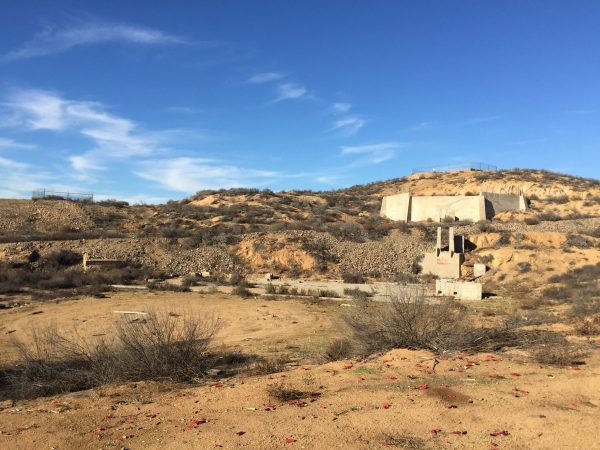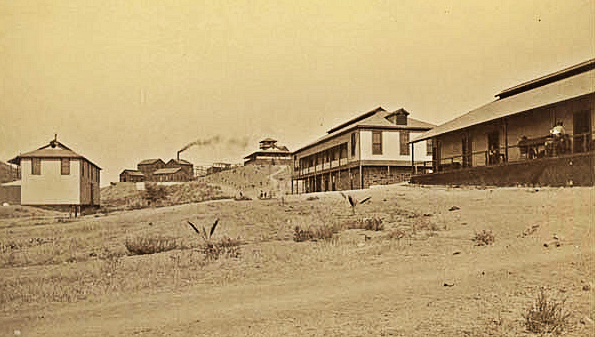 Buildings at the old tin mines in the early 1890s.
Buildings at the old tin mines in the early 1890s.
‘There’s tin in them thar hills!’
By TOM RITCHINS
HISTORY OF CORONA
Facebook page
When Daniel Sexton journeyed to Southern California in 1841, he settled down and married the niece of Chief Solano of the Cahuilla Indians. Through his positive relationship with the Indians, Chief Solano instructed his medicine man to show Sexton a sacred hole in the ground where a metallic substance was located and that the Indians used as tribal medicine.
WANT MORE?
WESTERN MINING HISTORY
Temescal Tin Mine Facts
______________________________________
THE CAJALCO DIGS:
Exploring an Early California Mining Camp
By T.A. FREEMAN
______________________________________
BACK IN THE DAY:
Tin Mining Once
Had Inland Base
By STEVE LECH
Riverside County Historian
______________________________________
Sexton thinking it was silver let the word out, and by 1859 a load was extracted and surprisingly the metal was identified as tin. The news of the tin discovery made national attention. Up to this point there were no tin mines in the United States and this was our nation’s first big tin discovery.
In 1860 the hole with the tin turned into the Cajalco Mine and business operations were organized as the Temescal Mining Company. With a staff of 16 miners, by 1865 the mine shipped five tons of ore to the San Francisco Vulcan Iron Works for crushing, then shipped to Wales in the United Kingdom for refining.
During 1868, San Jacinto Tin Company purchased the mine and increased the staff to 30 men working the mine. Their purchase was a success. The miners started crushing the ore on-site, and then would ship the concentrate to San Francisco in sacks to the Mosheimer Works for smelting and refining. It was at these works that in December of 1868, the first bar of American-mined tin, weighing 85 pounds, was produced.
It was technology that really put our nation’s Cajalco tin mine on the map. In the 1880s it was discovered that when adding tin to metal cans (tin cans), food could be packaged and the containers wouldn’t rust, thus making tin invaluable for the preservation of food.
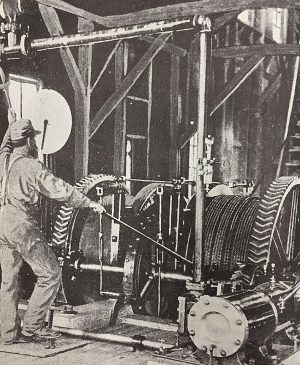 This really kicked mining activities into high speed. By 1891 there were 250 men working the mine, 82 veins of ore were discovered, and according to James Van Allen of the Scientific American, he visited the mine and estimated that workers were stamping 75 tons of rock daily.
This really kicked mining activities into high speed. By 1891 there were 250 men working the mine, 82 veins of ore were discovered, and according to James Van Allen of the Scientific American, he visited the mine and estimated that workers were stamping 75 tons of rock daily.
Not only was the tin mine successful, the owners of the mine also decided to mix politics with their mining. Desiring to sell their tin at higher prices, the mine petitioned congress to slap a tin export tariff on Great Britain. To influence congressional decision in their favor, they produced 500 small bars, stamped them, and sent one to each member of congress bragging, in essence, that they could supply enough tin for the entire country. Even the President of the United States Benjamin Harrison sided with the mines’ political efforts. While journeying through California via train, the president stopped at the train station in Corona, mounted a platform and took a picture next to a sign on top of a tower of tin bars that read, “The First American Tin Mine, April 23, 1891.”
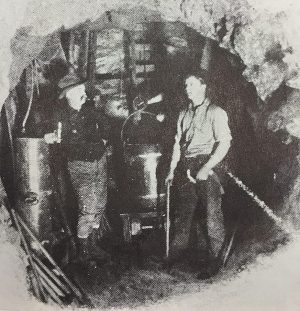 The political scheming worked. Congress passed the McKinley Tariff, and the Temescal mine had the advantage. However, it turned out it was all for nothing. Just one year later in 1892, the tin veins ran dry, and the tin mines closed.
The political scheming worked. Congress passed the McKinley Tariff, and the Temescal mine had the advantage. However, it turned out it was all for nothing. Just one year later in 1892, the tin veins ran dry, and the tin mines closed.
That was pretty much the end for our nation’s tin mining. Except for a short time during World War II when the tin mines reopened briefly for war purposes, the mines have sat closed and dormant to this day.
Notes and Sources from the author:
1. Photos are part of the Corona Library Heritage Room Collection
2. “The Temescal Tin Fiasco” by Donald Chaput. Copy of this publication can be found at the Corona Library W.D. Addison Heritage Room
3. Current pictures of Temescal Tin Mine are property of the author
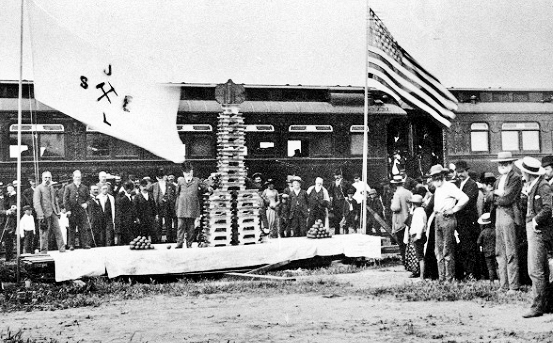 President Benjamin Harrison in 1891 makes a train stop to admire a tower of tin from the Temescal Tin Mine. The sign read “The First American Tin Mine, April 23, 1891.”
President Benjamin Harrison in 1891 makes a train stop to admire a tower of tin from the Temescal Tin Mine. The sign read “The First American Tin Mine, April 23, 1891.”
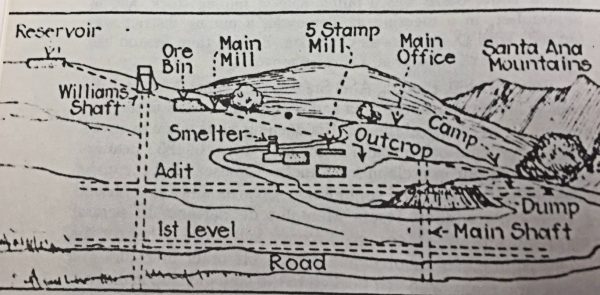 An early map depicts the layout of the mine.
An early map depicts the layout of the mine.
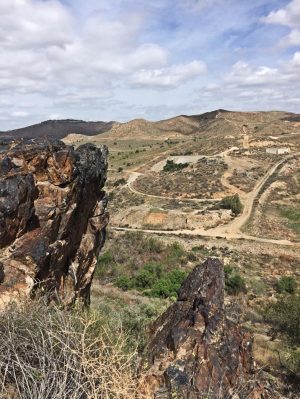
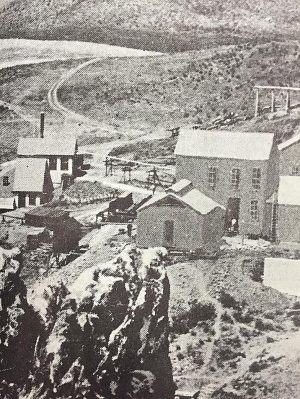
Modern-day photo on the left was shot in about the same proximity as the photo on the right taken about late 1880s or early 1890s.
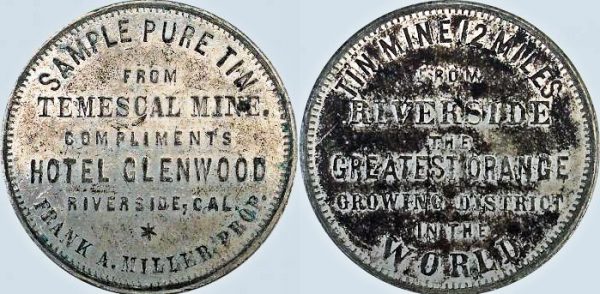
Frank Miller, proprietor of the Mission Inn (then known as Hotel Glenwood) minted tokens circa 1880s from Temescal Tin Mine ore. One side read, “Tin Mine 12 miles from Riverside. The greatest orange growing district in the world.” This token sold at auction in 2017 for $250.
